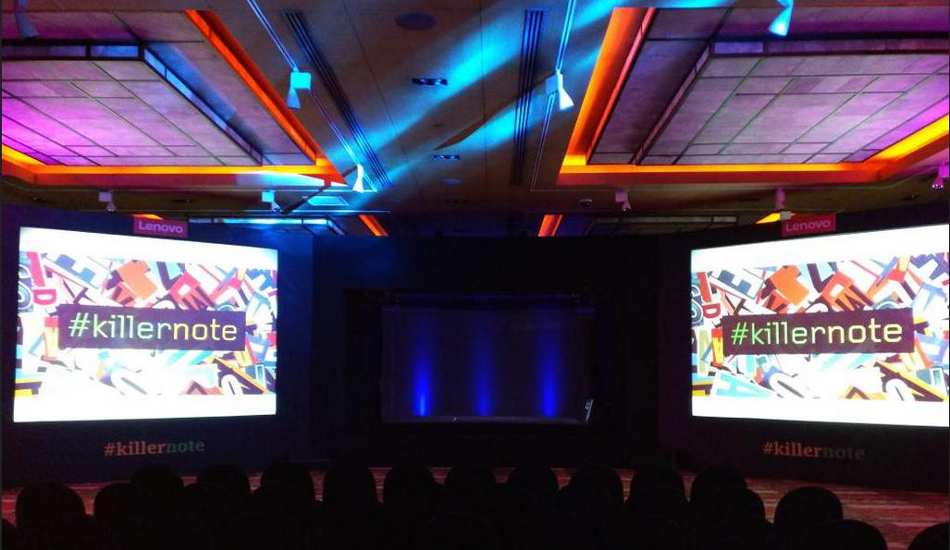Lenovo today launched its K3 Note in India for Rs 9,999, which it calls as the “Killer smartphone”. In a interesting teaser campaign before its launch, Lenovo asked people to write obituaries for their existing smartphones.
Well, we too are impressed with the campaign but really the K3 Note is a killer smartphone? Let’s check out. Here we have thus pitted it against the reigning champs in the sub-Rs 10,000 segment – the Redmi Note 4G of Xiaomi, Yu Yureka and the Asus Zenfone 5 (16 GB).
Display
The Lenovo K3 Note features a 5.5 inch touchscreen with full HD (1920×1080 pixels) resolution. The Redmi Note 4G too offers a 5.5 inch screen but with just high definition resolution. The Asus Zenfone 5 has a smaller 5 inch display that comes with HD resolution. Yu Yureka too has a 5.5 inch display but with HD resolution.
However, the Lenovo and Xiaomi handsets do not have Corning Gorilla Glass protection as the Asus Zenfone 5 and Yu Yureka.
Processor
In the K3 Note, the display is backed by the MediaTek MT6752 Chipset that has a 64 bit Cortex-A53 octa core Processor that runs at 1.7 GHz clock speed. It has ARM Mali-T760 MP2 graphics processor.
On the other hand, Asus Zenfone 5 has a 1.6 GHz Intel Atom Z2560 dual core processor. The Redmi Note has 1.6 GHz Qualcomm Snapdragon 400 MSM8928 quad core processor. The Yureka has a much better Snapdragon 615 quad core processor.
OS
The Lenovo K3 Note comes armed with Android 5 aka Lollipop operating system. Like other Lenovo smartphones, the Vibe 2.0 UI is laid on top of it.
Meanwhile Asus and Xiaomi and Micromax have too released the Android Lollipop version for the Zenfone 5, Redmi Note and Yu Yureka respectively. While the Zenfone 5 has the ZenUI interface, the Redmi Note 4G also comes with a customised interface called MIUI.
Storage
All the four phones have 2 GB RAM. Except Redmi Note 4G which comes with 8 GB ROM, all the other three smartphones have 16 GB internal storage. However, in terms of expandable storage the K3 Note and Yu Yureka lag behind the other two whose expandable storage slot can hold a micro SD card of up to 64 GB.
Camera
Both Lenovo K3 Note, Yu Yureka and Redmi Note 4G have 13 Megapixel rear camera and a 5 megapixel selfie taker. The Zenfone 5 of Asus offers an 8 megapixel rear camera and a 2 megapixel front snapper. So here the Lenovo handset looks at par with Redmi Note 4G.
During our review, we highlighted some issues with the Redmi Note’s camera which otherwise managed to produce decent images.
You can also check out our camera comparison of Yu Yureka and Redmi Note 4G here.
Battery
The Lenovo smartphone has a 3000 mAh Li-Ion battery which is removable. The Redmi Note 4G too offers a huge 3100 mAh Li-Po battery. The Asus Zenfone 5, which has a smaller 5 inch display, has a smaller 2110 mAh battery. Yu Yureka offers a 2550 Li-PO battery.
Connectivity
Here the Lenovo K3 Note and Yu Yureka enjoy a dominate position as they have dual SIM with 4G connectivity. The Redmi Note too offers 4G connectivity but has only one SIM slot while Asus Zenfone 5 though has two SIM slots offers only 3G.
Other features like WiFi, GPS, Micro USB port are common to all the three phones.
Conclusion
The Lenovo K3 Note seems to have borrowed the good features of the current champs in the sub-Rs 10,000 segment. It looks best in most departments including connectivity (dual SIM, 4G), CPU (64 bit octa core), OS (Android Lollipop), camera (13 MP+5MP), battery, and display. Considering Lenovo’s other products in the segment like Lenovo A6000, A6000 Plus, and A7000, we expect the K3 Note to deliver results as it promises on paper.
We will shortly come out with a detailed review of Lenovo K3 Note so till then keep checking The Mobile Indian.


